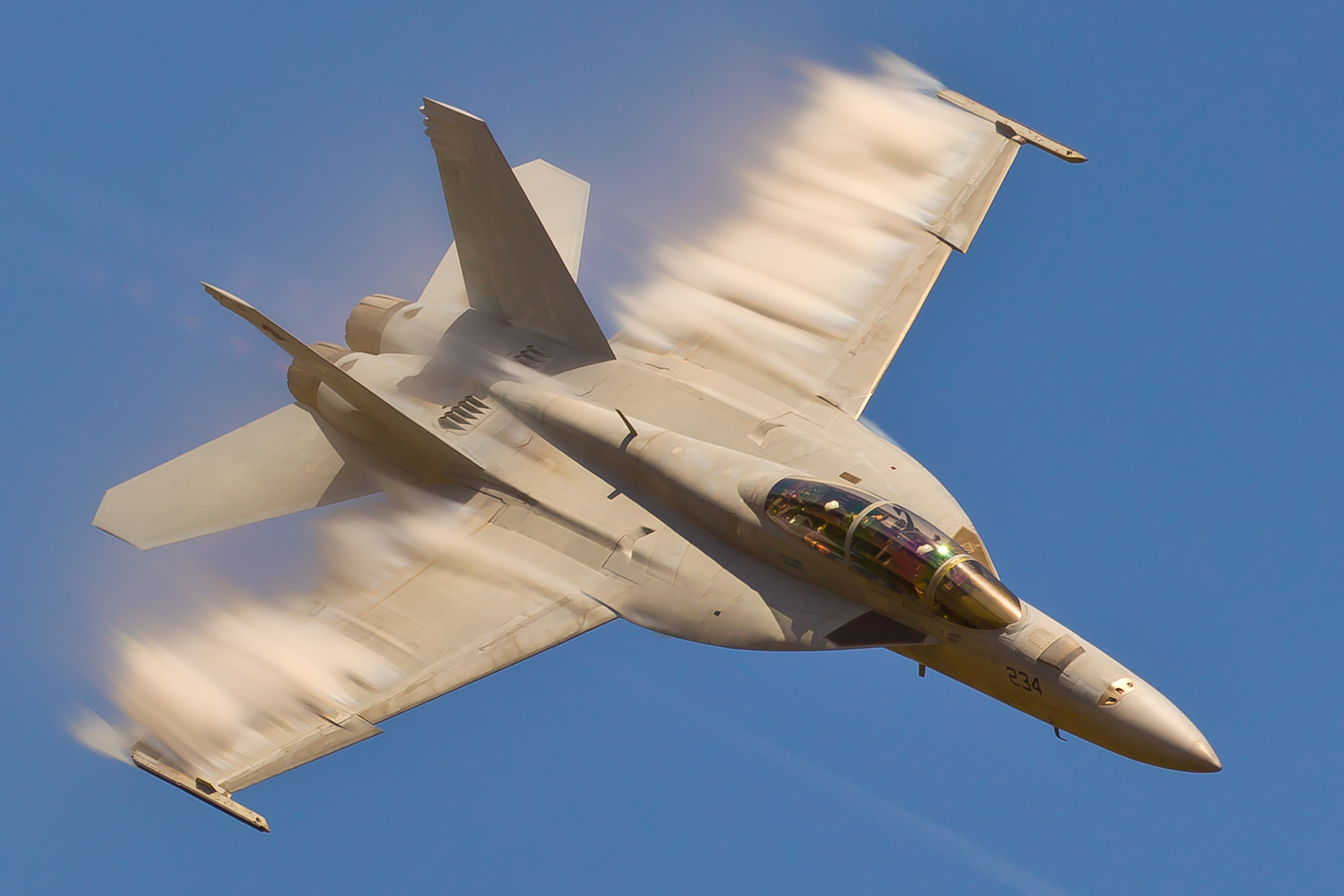DCS World F-18C Hornet – DESTROYS ENEMIES EASILY Tutorial.
Introduction
The DCS World F-18C Hornet is an extremely versatile 4th generation all weather, twin engine fighter built by McDonald Douglas. The F-18 was part of the LWT (Light Weight Fighter Competition) proposal along with the General Dynamics F-16 Falcon. The F-16 Falcon won the competition for the USAF but the Navy saw the potential in this agile twin engine, fighter for carrier operations.
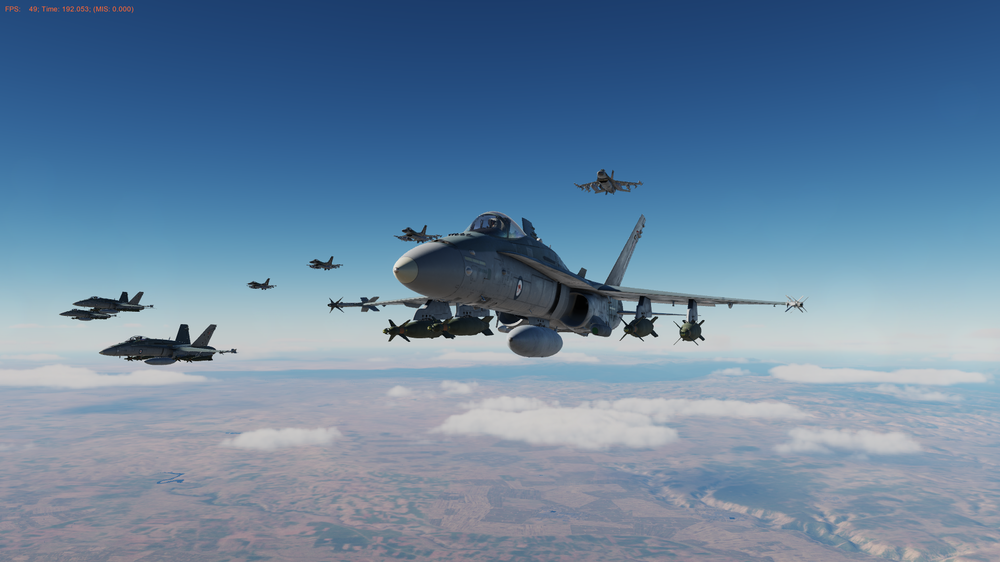
What You Need to Know!
The F-18C Hornets dogfighting qualities are well known. If your looking to get the maximum performance from your new DCS world F-18C it can be a challenge without the right information. This post aims to resolve this for you. Let me guide you with what you need to know to be the best DCS World F-18C Hornet. You need to understand BFM pilot (Basic Dogfight Maneuvers so you can be and dominate your next PvP engagement.
There are a number of parts you need to understand first. All aircraft are different so knowing one won’t necessarily help you with another. Let’s break these down what you need to know below and by the end you will know how to fly your F-18C in BFM efficiently.
How Good is the Hornet?
The F-18C has proven itself over and over in both air to air and air to ground combat. The F-18C Hornet became the first strike aircraft in history to make an Air-to-Air kills while still carrying its Air to Ground weapons. Previously combat aircraft had to drop their bombs to defend themselves. They were simply not maneuverable enough with their air to ground weapons. The F-18C achieved this feat while attacking targets during the Iraq War.
- Latest CPU’s Available Now – Amazon.com
- Get a NEW GPU Best Performance – AMAZON.com
- Upgrade RAM Here today – AMAZON.com
- Prebuilt PC Options – AMAZON.com
DCS World F-18C Hornet
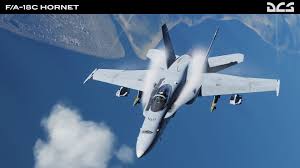
- What is the F-18 Hornet.
- F-18 Specifications.
- Learning F-18C Performance.
- Finding Real Opposition
- PvP Learning Process.
- Advantages in a Dogfight
- I Found the Hornet Corner Speed!
- GUNNIE your Flying to FAST!
- It Worked
- Maintain Throttle Control
- Mach Numbers vs Knots
- One Circle or Two Circle Fight
- Managing Closure Speed
- F-18 Flight Control OVERRIDE
What is the F-18C Hornet.
The DCS World F-18C Hornet was originally conceptualized as part of the light weight fighter competition in the 1970s. Since then the Hornet has grown to be so much more than the sum of its parts. It has a modern fly by wire control system that makes its maneuverability exceptional. The multiple channel redundant flight control system characteristics are precise and easy to control in a wide range of flight conditions.
It’s powerful twin F404 engines provide more than ample performance to make every encounter winnable. The wide performance envelope the F-18C is being able to fly easily at around 100 kts up to Mach 1.8. The controllability and flying qualities make it a fantastic western aircraft to learn in DCS World. It’s controls are precise, just what you need for a carrier landings or high AoA maneuvering against another fighter. These are exactly why you should consider it as your next DCS jet.
F-18 Specifications:
The DCS World F-18C Hornet is the complete package with performance and flexibility in role with a wide array of ordinance. Let’s look at the performance specifications first. The aircraft itself is not a large aircraft like the F-15 Eagle for example.
It’s leading edge wing root extensions are one of its prominent visible characteristics. The LEX’s as they are known provide blending of the airflow between the fuselage and wings. They assist in creating more lift and controllability.
The fully moving tail planes as well as the twin rudders in the DCS World F-18C Hornet all operate independently provide the wide range of high AoA and combat maneuverability that makes the Hornet such a capable aircraft.

General characteristics
- Crew: 1 (C)/2 (D – pilot and weapon systems officer)
- Length: 56 ft 1 in (17.1 m)
- Wingspan: 40 ft 4 in (12.3 m) with AIM-9 Sidewinders on wingtip LAU-7 launchers
- Width: 27 ft 7 in (8.4 m) wing folded
- Height: 15 ft 5 in (4.7 m)
- Wing area: 410 sq ft (38 m2)
- Aspect ratio: 4
- Airfoil: root:NACA 65A005 mod.; tip:NACA 65A003.5 mod.
- Empty weight: 23,000 lb (10,433 kg)
- Gross weight: 36,970 lb (16,769 kg)
- Max takeoff weight: 51,900 lb (23,541 kg)
- Fuel capacity: 10,860 pounds (4,930 kg) internally
- Powerplant: 2 × General Electric F404-GE-402 afterburning turbofan engines, 11,000 lbf (49 kN) thrust each dry, 17,750 lbf (79.0 kN) with afterburner

Performance
- Maximum speed: 1,034 kn (1,190 mph, 1,915 km/h) at 40,000 ft (12,000 m)
- Maximum speed: Mach 1.8
- Cruise speed: 570 kn (660 mph, 1,060 km/h)
- Range: 1,089 nmi (1,253 mi, 2,017 km)
- Combat range: 400 nmi (460 mi, 740 km) air-air mission
- Ferry range: 1,800 nmi (2,100 mi, 3,300 km)
- Service ceiling: 50,000 ft (15,000 m)
- Rate of climb: 50,000 ft/min (250 m/s)
- Wing loading: 93 lb/sq ft (450 kg/m2)
- Thrust/weight: 0.96 (1.13 with loaded weight at 50% internal fuel)
Armament

- Guns: 1× 20 mm (0.787 in) M61A1 Vulcan nose mounted 6-barrel rotary cannon, 578 rounds
- Hardpoints: 9 total: 2× wingtips missile launch rail, 4× under-wing, and 3× under-fuselage with a capacity of 13,700 lb (6,200 kg) external fuel and ordnance, with provisions to carry combinations of:
- Rockets:
- Missiles:
- Air-to-air missiles:
- 2× AIM-9 Sidewinder on wingtips and
- 8× AIM-9 Sidewinder (with double-racks) or 4× AIM-132 ASRAAM or 4× IRIS-T (EF-18A/B) or 8× AIM-120 AMRAAM (with double-racks) and
- 2× AIM-7 Sparrow or 2× AIM-120 AMRAAM
- Air-to-surface missiles:
- Anti-ship missile:
- Air-to-air missiles:
- Bombs:
- B83 nuclear bomb
- B61 nuclear bomb[189]
- Joint Direct Attack Munition JDAM precision-guided munition (PGMs)
- Paveway series of laser-guided bombs
- Mk 80 series of unguided bombs
- CBU-78 Gator
- CBU-87 Combined Effects Munition
- CBU-97 Sensor Fuzed Weapon
- Mk 20 Rockeye II
- Mk 77 Incendiary bomb
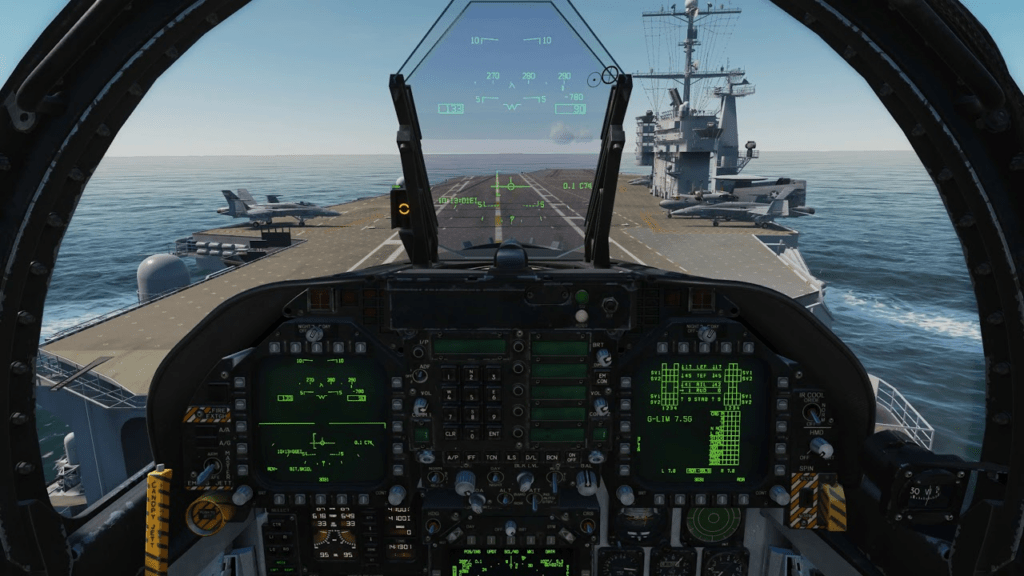
The array of performance and weapons is impressive and not complete with many countries employing specialist equipment on their own models.
Learning the F-18C Performance.
I was looking to take the step from Flaming Cliffs 3 F-15C to the DCS World F-18C Hornet because I had been doing well on PvP (Player vs Player) servers. I was probably honestly achieving about a three or four to one kill ratio which I would call fair.
Finding Real Opposition
It’s frustrating having been doing well in the F-15C to then be on the receiving end of countless 20 and 30mm rounds to the face. Jumping into your new shiny DCS World F-18C Hornet, you will need to learn it’s strengths and weaknesses quickly to get your kills.
It’s not pretty getting killed by other players seemingly effortlessly. New to DCS World and PvP you should be ready to be in this situation. It will likely be a regular occurrence in the beginning. It’s part of the frustration of learning sadly.
PvP Learning Process.
In PvP you never know who your fighting and their skill level. It’s pretty obvious when you meet someone with less knowledge that yourself. It’s even more obvious when you meet someone much better than yourself. Yes they stick to your tail and get there from the merge in no time. They kill you without hesitation. You too must become like this and you can with my help.
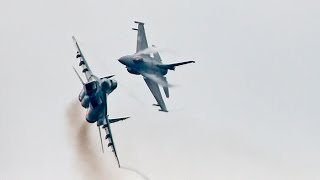
Advantages in a Dogfight.
Dogfighting is all about energy and how you spend it. If you have speed or altitude this can be cashed in to get speed or energy to turn and kill your opponent. If after pulling to hard on the stick and losing all your speed to get a shot you need to get it back fast.
You can trade altitude for energy which works till you transition to the deck. On the deck if your out of energy your in big trouble. The only answer other than altitude is to unload the aircraft and let the engines get you back to corner speed.
This can be done if you can by pushing the stick forward till you at zero Gs which is referred to as unloading the jet. Taking the load and drag off the wing will initially assist the engines performance. They will be pushing an aircraft that essentially weighs little. You haven’t overcome the inertia though.
This has to be timed correctly so as not to make it easy for your opponent to kill you.
Your speed management is crucial and knowing what speed to fly is different for every aircraft. It also changes depending on your weight and altitude.
Corner Speeds you Need to Know.
Knowing the corner speed of your aircraft is imperative to you being successful in BFM. There are two corner speeds and they are different for every aircraft. There is an instantaneous Corner speed. This speed will give you your maximum turn rate/radius but it is not sustainable. Your aircraft will lose speed quickly. It’s a great place to be when entering the merge. The next speed is the Sustained Corner Speed. This as the name suggests you can maintain if you fly it well. It will give you your maximum rate/radius turn and you won’t lose speed.
In fact you may haven’t adjust throttle as well as stick pressure not to accelerate away from this magical place. It’s very hard to do while tracking a target. If you have the HMCS (Helmet Mounted Cueing System) on in your Hornet or F-16 no matter where you look you can keep track of the target and your turn performance.
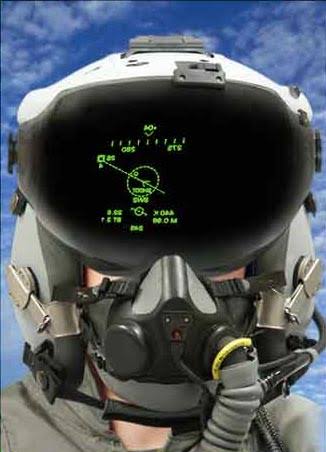
The F-18 Energy Management diagram above shows you exactly where to fly the Hornet speed wise at 10,000 ft. You can see the Instantaneous Turn Speed is at just over 300 knots at 15000 ft and achieves 18 degrees per second rate. The next very important number is the Sustained Turn Rate which at 15000 ft is just around 300 knots and achieves 18 degrees per second.
It is unrealistic to have both at the same speed I believe. I cannot find a genuine Hornet EM diagram but this one is close. Let me explain.
I Found the Hornet Corner Speed!
This is the answer you were looking for. Why do I know it’s correct in DCS WORLD? I know because till I got this I was getting murdered one flight to the next, day after day.
GUNNIE your Flying to FAST!
I was on the Montabetta DCS PvP server in the evening. This is an excellent PvP server may I say. I highly recommend it! I had been frustrated getting killed in both the F-16 as well as the F-18C on previous days. This day was no different. I tried flying fast so as to get separation at the merge and then turn. No good, Dead! This guy was good and he just put himself behind me so easily. Nothing the Hornet could do would shake him.
This happened eight times in quick succession. Dead every time! Yes, I was getting more than frustrated so I dropped my speed to 450 then 400 and nothing worked. I expected around 400 would be fine as a corner speed.
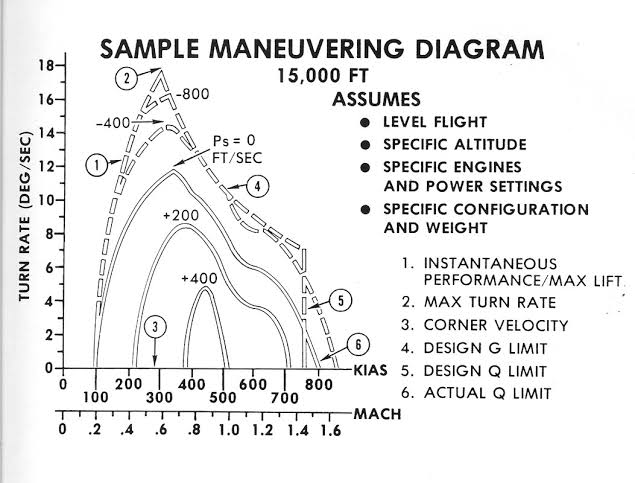
The opponent pilot said to me in the chat .. Gunnie Your Flying to Fast! OK I thought, what do I need to do? I decided to drop to 300 knots not thinking it would make the slightest difference. Speed is life after all! We approached once again to merge.
We launched our Aim 9s into the open air as a sign of guns only. A few people have done this on the server. Just a note. A few have shot me prior to the merge but that’s a story for another day.
It Worked!
We merged and I was about 320 knots. He was nearly supersonic in his F-16. I pulled on the stick added power just prior to the merge to spool up the engines. It was pretty easy to track him visually as he climbed high.
Lighting the burners the F-18 tracked him perfectly placing the Viper right him on the Hornets lift vector. It was just simplicity tracking the Viper. No matter what he Viper did the Hornet followed.
The Hornet easily pulled him into the HUD until the distance was close enough. The Hornet tracked perfectly as the piper crossed the left wing which was ripped off by a burst of 20mm from the M61A1 rotary cannon. I
was truly taken aback by the amazing ability to track the Viper. It was really easy! No matter what the Viper did the Hornet compensated and kept position.
TIP: Generally fly the F-18C between 350 Knots – 380 Knots is the best sustained turn speed Range!
Maintain Throttle Control.
The throttle did get away a couple times letting the speed built like a freight train. It was unbelievable how quickly it could get away. Returning the engines to idle and pulling harder on the stuck quickly reduced the speed back to 350 knots. Increasing power gently the Viper became child’s play.
Mach Numbers vs Knots
The air is thick near the ground and gets thinner as you go higher. This means you need more speed to have the equal amount of lift on your wings to turn and kill the bandit. You will see Mach number rise in regard to corner speed from sea level to 10,000 ft to 40,000 ft. Your weight again makes a difference.
The heavier you are you will need some more speed. If your carrying two fuel tanks and a lot of air to ground ordinance your simply not going to get the best corner speed. The drag of all those stores on the wings make a huge difference.
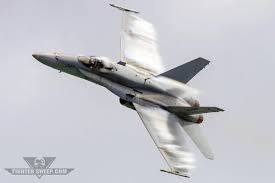
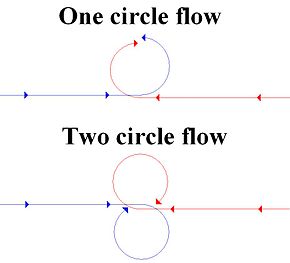
One Circle or Two Circle Fight
Knowing your own fighters strengths and weaknesses as well as your opponents in crucial. The F-18C is more a one circle fighter which is a Radius fight. This means it can get its nose around fast and employ weapons.
This is inherent in its design with the high AoA ability it has. Entering the merge at the right speed will make the F-18C a formidable opponent. The One Circle flow is when you turn so you are nose to nose with your opponent.
This draws a single circle in the air hence its name. Aircraft that also like the One Circle are delta aircraft like the Mirage 2000 which is excellent at it.
If your in a Two Circle flow you will be flying chasing your opponents tail. This flow causes you to fly two circles in the air and is a rate fight. A rate fight differs from a radius fight as it’s about how fast you can get around the circle. It’s measured in degrees per second and not distance.
The F-16 Viper is arguably the best rate fighter in the world. It’s amazing performance gives it a rate of about 20 degrees per second around the circle. The F-18 rates around the circle at about 18 degrees per second. This means in only a few circuits the F-16 will be on the F-18s six o’clock and kill it.
- Joystick / HOTAS – AMAZON.com
- Rudder Pedals – AMAZON.com
- Throttle Quadrant – AMAZON.com
- Gaming Chair – AMAZON.com
- VR Headset – AMAZON.com
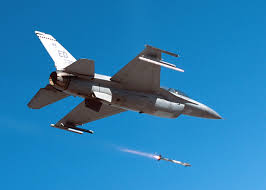
Managing Closure Speed
Its time to manage your closure speed and the concept for this is easy. It’s known as pursuit and it comes in Lead, Pure and Lag pursuit. If you are tracking the target and you wish to close quickly aim your velocity vector in the HUD in front of the target. You will close quickly on the target.

If your closing to fast move the velocity vector to on top of the aircraft. Your now in pure pursuit and you will close on the target slower than in lead. Finally to really control your position you can move to lag pursuit where you place your velocity vector behind the target aircraft. This is the slowest version.
F-18 Flight Control OVERRIDE (New)
In a recent online PvP session (April 22) I got my butt handed to me by another F-18 pilot. He flew normally as we merged and bled his speed down to Mach 0.3 and then the Hornet nearly flipped. It turned so tight and pulled me into the HUD and shot me. This is where TACVIEW is indispensable because without it I could not have sussed out what he was doing. I have not seen anyone do this before.
Over the preceding days in two sessions I was doing well having had about 15 kills in a row without a loss. The Hornet is so dominant even against Vipers. Yes the ego was growing a little. But there is always a but isn’t there. I was scratching my head on how this would be possible. I remembered the Cobra button in the SU-33 so looked on the forums to see if the Hornet had the equivalent of the cobra button we all know about.
The Hornets flight controls are tightly controlled by the stores management system and main computer. (I have worked on real F-18s). The override it turns out is the nose wheel steering pinky lever on the control stick. If you pull the lever your G limit is mostly removed as well as getting high gain steering for aircraft carrier parking.
Your 7.5G limit becomes 9Gs but more importantly your control authority is larger and you can make tight high AoA turns like the ones I was getting shot with at low speed. I saw this done in a Grim Reapers YouTube Video so it’s genuine. It’s probably the same in the real F-18 otherwise how could they get to 20 deg AoA at 120 Knots or so in displays. I have seen this done. It’s incredible.
You may wish to map this button for the emergency situation you need to make a tighter turn. Caution at high speed you can destroy the aircraft, but again you can make a fast turn at low speed safely with this button mapped. Try getting to around Mach 0.3 and give it a try.
Note: The Swiss F-18 Hornets have a different wing and are 9G capable normally where the USA and other countries are 7.5 G limited without using the override.

Wrap Up
In finalizing this post let’s put it all together. The Hornet is going to be best from around 300 to 350 knots. Maintain Tally ie. Keep visual view of your target. Keep the target on your lift line and manage your closure to get close and kill it. Don’t fly HUD bfm. Keep your opponent about a fist or so above the canopy bow. When you have the energy as well as a low aspect then pull the target in and kill it. Only when everything is right do it.
Need Extra Gs use the Pinky Sw carefully. Get slow and need nose authority to point at a target again pull and hold the Pinky Sw. You have to be patient. It’s not always going to happen instantly but if you can see the enemy, you can kill it.
Disclaimer
This guide is intended for use in DCS WORLD only. I am not a fighter pilot but have over two decades working on all kinds of military aircraft as a weapons Egress technician and got to fly in a few. All information referenced is publicly available. Enjoy and get flying!
Author
Brendon McAliece (Aka Gunnie) is a military veteran with 23 years working on Jet Fighters, their weapons systems and ejection seat/module systems as well as munitions and R&D. Involved with flight simulation since the 1980s, he has flown all the major flight simulators over the years.
He is an Australian expat who has lived in Malaysia, UK, Saudi Arabia and more recently Thailand. He is a multi-lingual blogger who loves to share his life experiences here on LetsFlyVFR.com and DreamingGuitar.com, with his lifestyle and Travel experiences Blog plus his Dreaming Coffee website.
Learn More @
DreamingGuitar.com – DreamingCoffee.com – LetsFlyVFR.com
( HOME – BLOG – SHOP – ABOUT )
As an Amazon affiliate I may benefit from qualifying sales.
